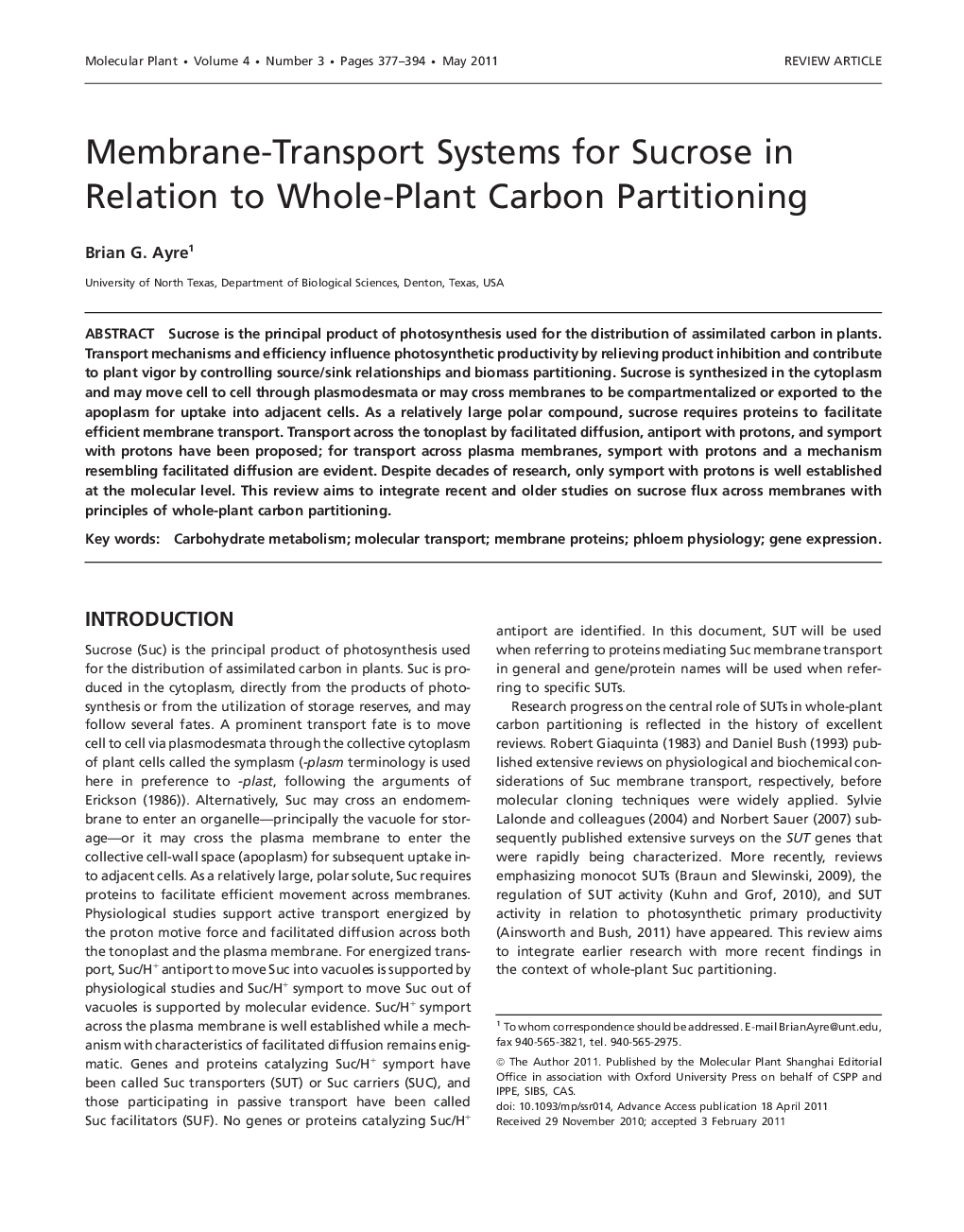| Article ID | Journal | Published Year | Pages | File Type |
|---|---|---|---|---|
| 4570658 | Molecular Plant | 2011 | 18 Pages |
ABSTRACTSucrose is the principal product of photosynthesis used for the distribution of assimilated carbon in plants. Transport mechanisms and efficiency influence photosynthetic productivity by relieving product inhibition and contribute to plant vigor by controlling source/sink relationships and biomass partitioning. Sucrose is synthesized in the cytoplasm and may move cell to cell through plasmodesmata or may cross membranes to be compartmentalized or exported to the apoplasm for uptake into adjacent cells. As a relatively large polar compound, sucrose requires proteins to facilitate efficient membrane transport. Transport across the tonoplast by facilitated diffusion, antiport with protons, and symport with protons have been proposed; for transport across plasma membranes, symport with protons and a mechanism resembling facilitated diffusion are evident. Despite decades of research, only symport with protons is well established at the molecular level. This review aims to integrate recent and older studies on sucrose flux across membranes with principles of whole-plant carbon partitioning.
